CPS Unit Number 002-01
Camp: 2
Unit ID: 1
Title: Glendora
Operating agency: AFSC
Opened: 6 1941
Closed: 12 1942
Workers
Total number of workers who worked in this camp: 205
-
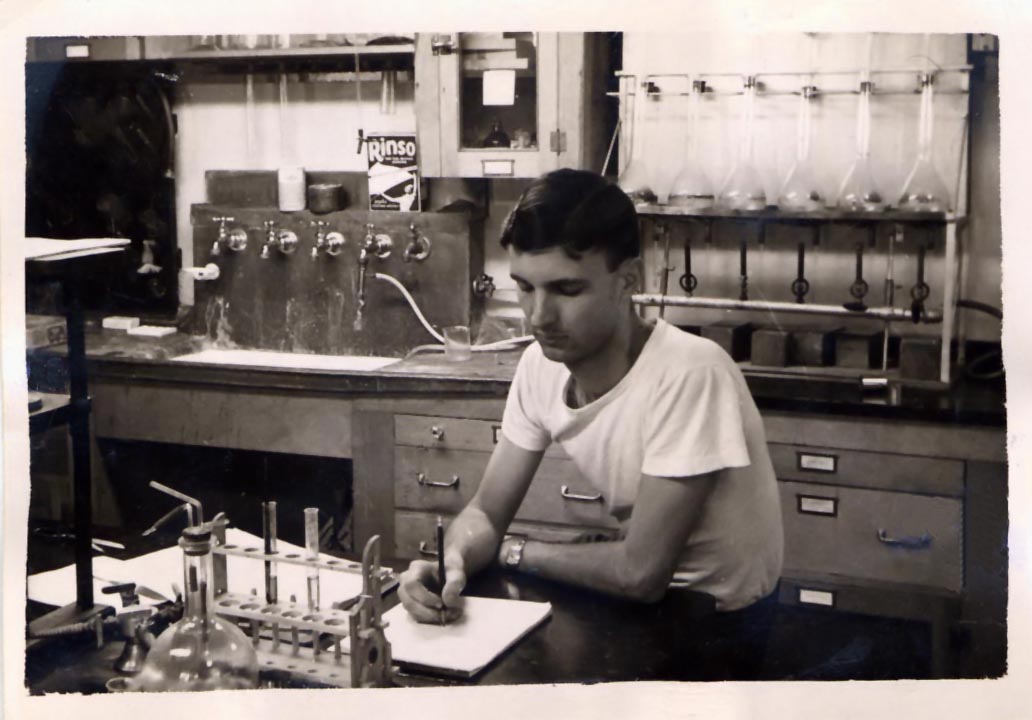 CPS Camp # 2 LaboratoryChemical analysis--Tanbark Soils Laboratory
CPS Camp # 2 LaboratoryChemical analysis--Tanbark Soils Laboratory -
 CPS Camp # 2 Measuring Soil TempSan Dimas CPS Camp. Reading thermometer for soil temperature is one of the many tasks assigned to men at San Dimas.
CPS Camp # 2 Measuring Soil TempSan Dimas CPS Camp. Reading thermometer for soil temperature is one of the many tasks assigned to men at San Dimas. -
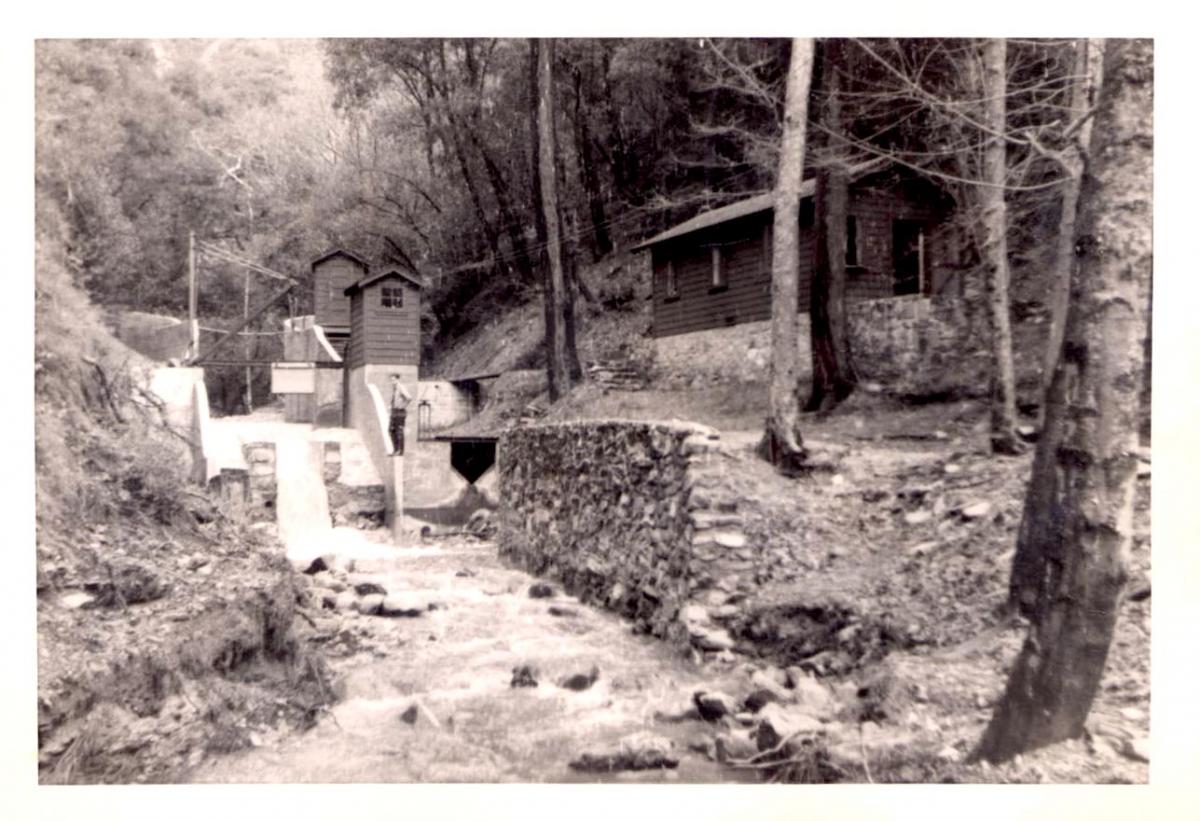 CPS Camp # 2Flumes--Stream Gauging Station
CPS Camp # 2Flumes--Stream Gauging Station -
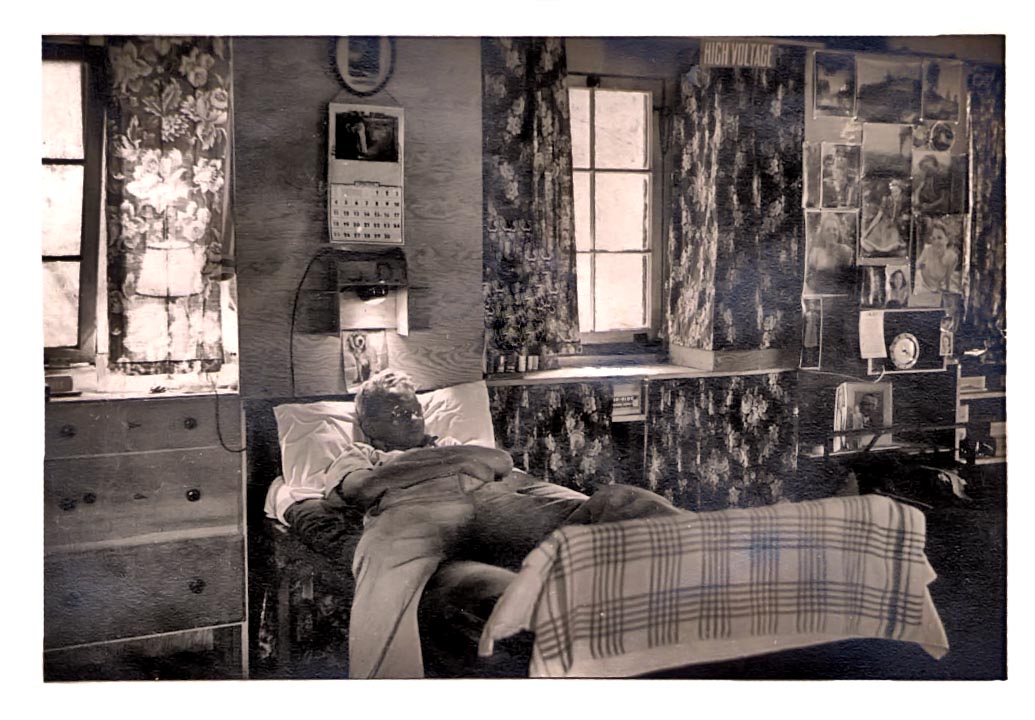 CPS Camp No. 2One bunk and one sleeping occupant at Tanbark, Glendora Camp.Digital image from American Friends Service Committee: Civilian Public Service Records (DG 002), Swarthmore College Peace Collection, Swarthmore, Pennsylvania
CPS Camp No. 2One bunk and one sleeping occupant at Tanbark, Glendora Camp.Digital image from American Friends Service Committee: Civilian Public Service Records (DG 002), Swarthmore College Peace Collection, Swarthmore, Pennsylvania -
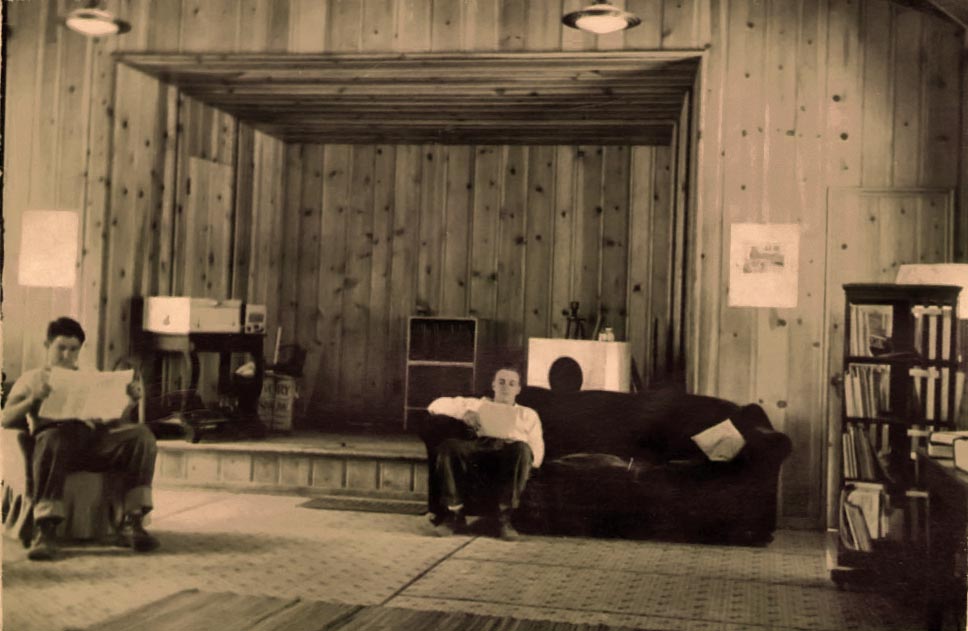 CPS Camp No. 2Interior of library at Glendora Camp.Digital image from American Friends Service Committee: Civilian Public Service Records (DG 002), Swarthmore College Peace Collection, Swarthmore, Pennsylvania
CPS Camp No. 2Interior of library at Glendora Camp.Digital image from American Friends Service Committee: Civilian Public Service Records (DG 002), Swarthmore College Peace Collection, Swarthmore, Pennsylvania -
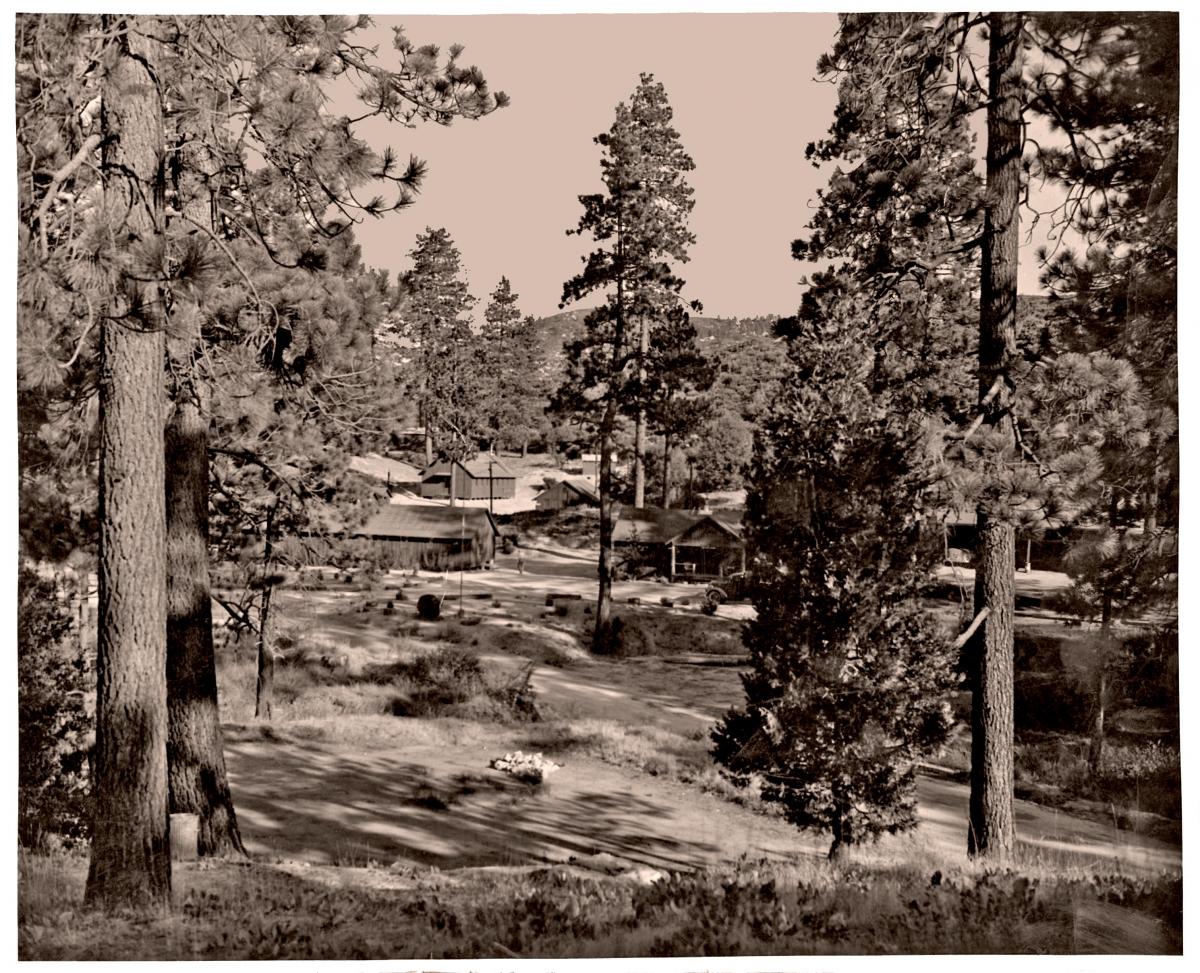 CPS Camp No. 2Buildings and Grounds -- Chilao Spike Camp, in Angeles National Forest (La Canada, California). Capacity = 60 men and 2 foresters. 65 miles from main camp (San Dimas, CPS Camp #2). Duties include firefighting, maintenance of public camps, roads, and trails, as well as general work in the forest. Photo by John H. Abbott??.Digital image from American Friends Service Committee: Civilian Public Service Records (DG 002), Swarthmore College Peace Collection, Swarthmore, Pennsylvania1941-1942
CPS Camp No. 2Buildings and Grounds -- Chilao Spike Camp, in Angeles National Forest (La Canada, California). Capacity = 60 men and 2 foresters. 65 miles from main camp (San Dimas, CPS Camp #2). Duties include firefighting, maintenance of public camps, roads, and trails, as well as general work in the forest. Photo by John H. Abbott??.Digital image from American Friends Service Committee: Civilian Public Service Records (DG 002), Swarthmore College Peace Collection, Swarthmore, Pennsylvania1941-1942 -
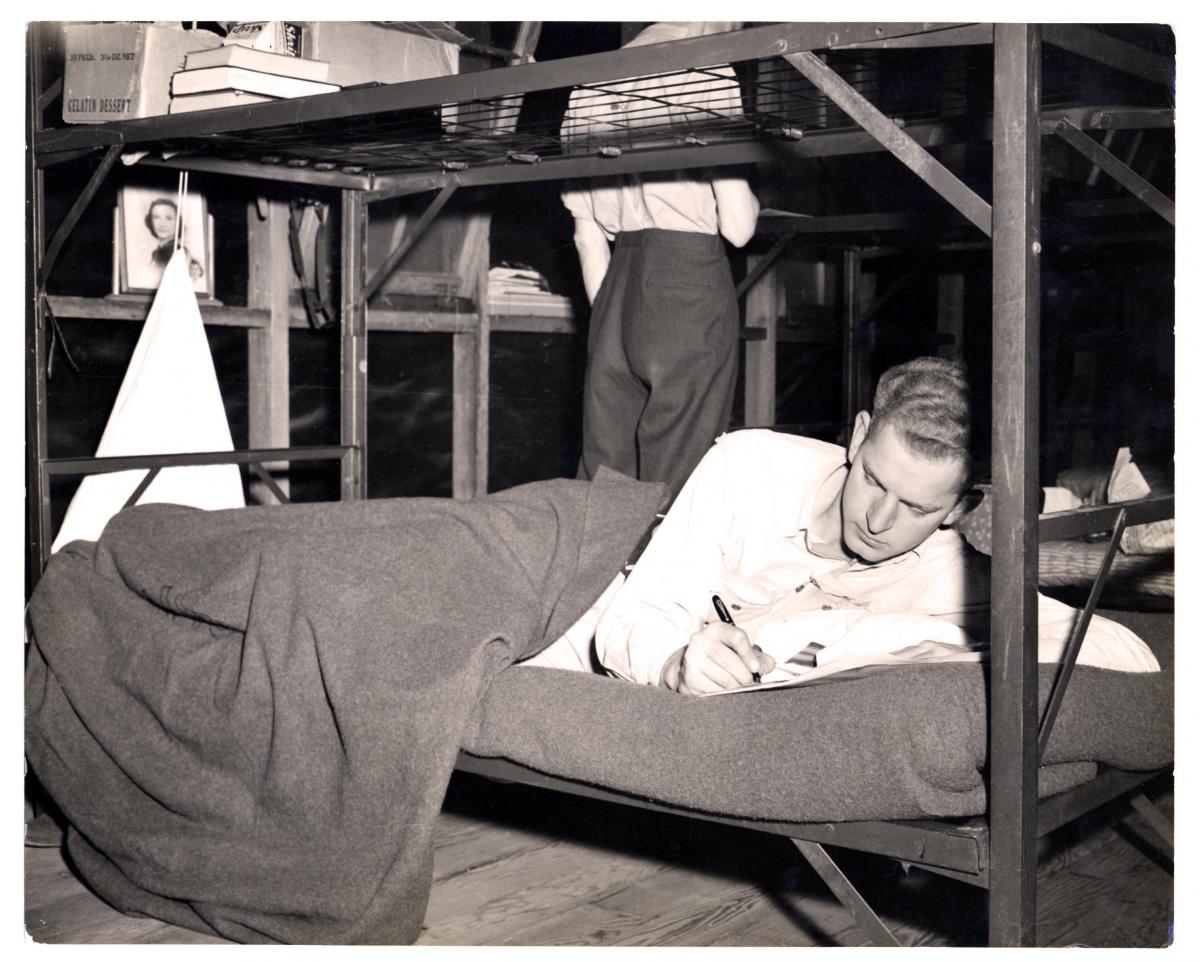 CPS Camp No. 2Man in bunk writing letter. San Dimas, California.Digital image from American Friends Service Committee: Civilian Public Service Records (DG 002), Swarthmore College Peace Collection, Swarthmore, Pennsylvania
CPS Camp No. 2Man in bunk writing letter. San Dimas, California.Digital image from American Friends Service Committee: Civilian Public Service Records (DG 002), Swarthmore College Peace Collection, Swarthmore, Pennsylvania
-
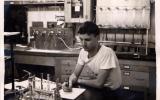
-
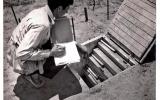
-

-
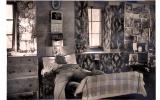
-

-
 1941-1942
1941-1942 -
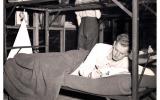
CPS Camp No. 2, a Forest Service base camp located in the San Dimas National Forest in San Dimas, California and operated by the American Friends Service Committee, opened in June 1941 and closed in December 1942. CPS men in this camp worked on a fifty-year analysis of the main watershed for Los Angeles County.
The camp was located about twelve miles from Glendora, California, thirty-five miles northeast of Los Angeles, and thirty miles east of Pasadena.
This Forest Service base camp lay on Tanbark Flat within the San Dimas Experimental Forest. On the south front of the San Gabriel Mountains northeast of Glendora, it was within the boundaries of the Angeles National Forest. This 17,000 acre segment included the drainage basins of the Big Dalton and San Dimas Creeks, both tributaries of the San Gabriel River. Tanbark Flat was at about 2,700 feet elevation. Operated by the American Friends Service Committee, the camp opened in June 1941 and closed in December 1942.
“The experimental area was representative of some 5,000,000 acres of chaparral-covered mountains in Southern California. An important further consideration was the existence of the San Dimas and Big Dalton Dams, built by the Los Angeles County Flood Control District, since these structures provide the means for measurement of total run-off and erosion from their respective watersheds.“ (San Dimas Rattler, August 16, 1941 p. 1)
Vitally important for both rural and urban populations in this semi-arid area, the studies focused the research objectives as follows:
1) To study the influence of the chaparral, vegetation, soils, geological structure, and other factors upon the yield of usable water;
2) To develop methods of managing or treating the chaparral water-sheds to obtain maximum yield of usable water with a minimum of damaging erosion.
The development of the outdoor laboratory required the addition of facilities, trails and roads, experimental equipment and telephone lines.
Directors: Edwin Newman, Oscar Marshburn
Nurse: Martha Rupel
Men in the camp ranged in age from 21 to 35, with nearly thirty of the men in the 22-24 range. According to the August 16, 1941 San Dimas Rattler, they had been born in sixteen different states, the District of Columbia and two had been born outside the United States in Germany and Lithuania. (p. 5)
The men at American Friends Service Committee camps tended to constitute the most religiously diverse group of men, including men who reported no religious affiliation upon entry into CPS. That was true at San Dimas with twenty-one different religious affiliations noted. As of August 1, 1941, two of the fifty-one men in the camp indicated none, five reported affiliation as Friend, one as a Rogerine Quaker and another as Humanist Society of Friends. Six men reported affiliation as Brethren, eleven as Mennonite or Mennonite Brethren. Other denominations represented included Baptist, Christian, Church of Christ, Congregational, Episcopal, Jehovah’s Witness, Jewish, Methodist, Mission Covenant, Nazarene, Pentecostal, Presbyterian, Roman Catholic, Russian Molokan, Theosophist, United Molokan. (San Dimas Rattler, August 16, 1941 p. 6)
Men in Friends camps entered CPS from a variety of occupations, and the numbers from cities were greater than from rural areas. Men in Friends camps on average entered with 14.27 years of education, some with graduate as well as post graduate education. (Sibley and Jacob p. 171)
CPS men assisted a small Forest Service research crew in its scientific research, augmenting the labor of diminished ranks in the Civilian Conservation Corps. They helped to protect the area from forest fires.
The COs worked at least forty-four hours per week, rotating from one crew to another. The first assignment involved finishing two large flumes in the San Dimas Canyon, work begun by the Work Progress Administration (WPA). That made it possible to secure accurate measurement of water flowing down the canyon.
Another crew repaired the road, “moving over a hundred tons of dirt and concrete”; cleaned warehouses and installed fire-fighting equipment, among other duties.
A third crew worked with Mr. Storey in the laboratories or in the field gathering materials or soil sample data for experiments and reports.
A fourth crew maintained the camp, working in the camp buildings, making repairs and keeping the mess hall in order.
The men worked on a fifty-year analysis of the main watershed for Los Angeles County. “They checked rain gauges, recorded water runoff and tabulated and analyzed results. Out of the work came a detailed life history of a drop of water as it fell on the rocks and forests of the area. This became the basis for new water management and water retention techniques.” (Keim p. 46)
The men published a camp newspaper San Dimas Rattler, beginning in August 1941. The Rattler continued after San Dimas closed and the camp moved to Glendora, as Camp No. 76.
The newsletter reported on camp activities as well as critical topics in the CPS world in addition to news from other camps and units.
Men often rushed out after supper to take in horseshoes or badminton. The men supported a baseball team, competing with area church and other community organization teams.
A music study group met on Tuesday afternoons from five to six and a camp chorus practiced on Thursdays at the same time. Chester Keeney provided the leadership for the music groups.
The camp program included movies, and visiting speakers. American Friends Service Committee leaders as well as other CPS people visited the camp and made presentations. The men also maintained a camp library.
On the first anniversary of the camp’s life, the San Dimas Rattler provided a retrospective on the first year of the camp, noting in particular some trying months in determining how to “find a sense of the meeting” as they worked out their governance system. They operated with a disciplining committee, which took action when men had been unable to manage self-discipline. (June 12, 1942 p. 2)
The men hosted a “gala celebration” of the camp’s first birthday on Memorial Day weekend. It opened with a business meeting, followed by “Doctor Happiness”, a radio humorist. Young women came from a Pasadena Co-op and Baptist women came from San Bernardino. In the evening, after a tour of the camp, all gathered for a group sing led by Galen “Stub” Harvey (Doctor Happiness) before they moved to the library which had been prepared for an evening of folk dancing. (p. 2)
For more information on Forest Service camps see Albert N. Keim, The CPS Story: An Illustrated History of Civilian Public Service. Intercourse, PA: Good Books 1990, pp. 43-48.
San Dimas Rattler, Vol. I No. 1 (August 16, 1941); Vol. I No. 6 (November 18, 1941); Vol. II No. 1 (November 22, 1941); Vol. II No. 3 (December 9, 1941); Vol. III No. 2 (March 13, 1942); Vol. III No. 5 (April 24, 1942); Vol. IV No. 1 (June 12, 1942) in the Swarthmore College Peace Collection, American Friends Service Committee: Civilian Public Service Records (DG002), Section 3, Box 1.
For stories from men who, as COs, walked to a different drummer during World War II, see Mary R. Hopkins, Editor, Men of Peace: World War II Conscientious Objectors. Caye Caulker, Belize: Producciones de le Hamaca, 2010, D. Thurston Griggs, pp. 203-211.
See also Mulford Q. Sibley and Philip E. Jacob, Conscription of Conscience: The American State and the Conscientious Objector, 1940-1947. Ithaca, NY: Cornell University Press, 1952.
Swarthmore College Peace Collection, Camp periodicals database.